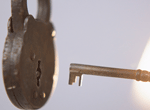Researchers at the University of Texas at Austin Radionavigation Laboratory have successfully demonstrated that a drone with an unencrypted GPS system can be taken over by a person wielding a GPS spoofing device. You can see a video accompanying a Fox News story on it, as well as a video here of an experiment conducted by the researchers, led by Professor Todd Humphreys.
Humphreys and company were recently invited by the U.S. Department of Homeland Security (DHS) to demonstrate whether their capability to successfully spoof commercial GPS systems in the laboratory could work in the field. Spoofing, as defined in this article by UT researchers, is “the transmission of matched-GPS-signal-structure interference in an attempt to commandeer the tracking loops of a victim receiver and thereby manipulate the receiver’s timing or navigation solution. A spoofer can transmit its counterfeit signals from a stand-off distance of several hundred meters or it can be co-located with its victim.”
The UT researchers took equipment costing about $1000 to the White Sands Missile Range in New Mexico last week and showed observers from both the Federal Aviation Administration (FAA) and DHS how control of a test drone could be taken away from its original overseers. The UT researchers, as the above article notes, have been able to take control of basically every type of unencrypted commercial GPS system in their laboratory.
Given the likelihood that a large number of drones will be plying the skies of the United States within a decade, the ability to easily spoof them is a bit disconcerting. The U.S. government is looking into the threat, but as the Fox News story states:
“DHS is attempting to identify and mitigate GPS interference through its new ‘Patriot Watch’ (pdf) and ‘Patriot Shield’ (pdf) programs, but the effort is poorly funded, still in its infancy, and is mostly geared toward finding people using jammers, not spoofers.”
As I said in a blog a few months ago, the UK has a program called Sentinel that looks for GPS jamming there. I believe the researchers at UT are associated with this program as well.
Humphreys is calling for the hardening of GPS systems used in drones before they get into widespread use. It is good advice, especially because of the abysmally low success rate for trying to design security features into computer systems after the fact.
Of course, drone GPS systems aren’t the only ones facing the threat of spoofing. One could use the technology to spoof aircraft, ship, or vehicle navigation systems that feature unencrypted GPS systems (think of what would happen to a spoofed autonomously driven car). This technique may even be able to bring down a smart grid (pdf) or financial market.
I think it would be interesting to see how the U.S. public feels about the possible spoofing of drones in comparison to (or in addition to) their privacy concerns involving wide-spread drone use.
Update: 26 June 2012
I received a kind note from the Association of Unmanned Vehicle Systems International (AUVSI), which wanted to address the issue of spoofing commercial GPS systems raised in the post. AUVSI bills itself as "the world's largest non-profit organization devoted exclusively to advancing the unmanned systems and robotics community." In order to provide a fuller context surrounding the potential for spoofing commercial UAVs, I have included below in its entirety a statement from AUVSI President and CEO Michael Toscano titled, On Ensuring the Safe Use of Unmanned Aircraft:
“The unmanned aircraft systems industry is committed to the safe and responsible integration of unmanned systems into the national airspace. We are already in communication with a variety of stakeholders to ensure unmanned aircraft are integrated safely so we can unlock the tremendous potential of this technology to enhance public safety, advance scientific research and otherwise benefit society, all while potentially creating thousands of jobs.
“‘Spoofing’ or otherwise tampering with GPS has dangerous implications for any technology which depends on it for guidance, whether it is manned or unmanned aircraft, your cell phone or your car. In fact, commercial airliners are relying more and more heavily on GPS signals to locate the runways at airports and, with the advent of the next generation air traffic control system, all aircraft – manned and unmanned – will rely on GPS for navigation.
“The industry is well-aware of so-called ‘spoofing’ and is already advancing technologies, such as SAASM – Selective Availability Anti-Spoofing Module – to prevent it. This technology is already in use by the military to thwart GPS spoofing abroad and we expect it will transition to civilian unmanned aircraft in the coming years to protect aircraft flying in the national airspace. Meanwhile, some unmanned aircraft also have alternate navigation systems, such as radio links and backup inertial systems, which provide redundancy to GPS.
“It is important to remember that while an aircraft itself may be unmanned, a trained professional is behind the controls, ready to respond, and bring a safe resolution to any problem that may arise. Like any other technology, unmanned aircraft technology continues to become smarter and safer every day. The industry is working with the FAA, DHS and other agencies to ensure safety is a top priority as unmanned aircraft are integrated into the national airspace.”
Comments, anyone?
Robert N. Charette is a Contributing Editor to IEEE Spectrum and an acknowledged international authority on information technology and systems risk management. A self-described “risk ecologist,” he is interested in the intersections of business, political, technological, and societal risks. Charette is an award-winning author of multiple books and numerous articles on the subjects of risk management, project and program management, innovation, and entrepreneurship. A Life Senior Member of the IEEE, Charette was a recipient of the IEEE Computer Society’s Golden Core Award in 2008.



